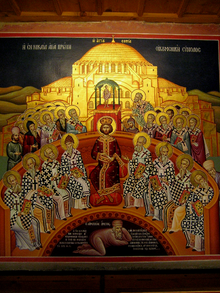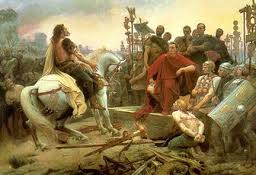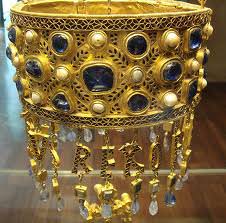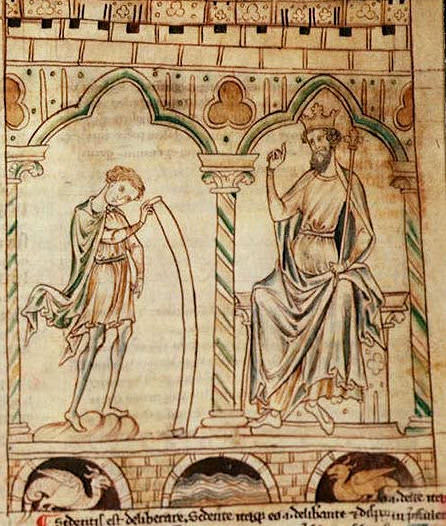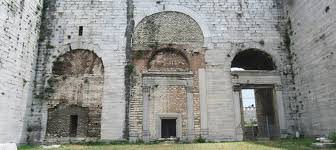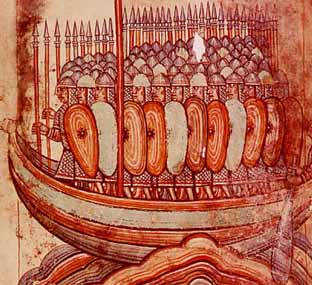Hafa nu ond geheald husa selest: Jurisdiction and justice in “Beowulf”
This coincidence of literary image with legal significance, is as I shall attempt to show in this study, by no means unique in Beowulf.
The Three Loves of Cúchulainn: The Impact of Warrior Relationships in The Táin
Before discussing the relationship between Cúchulainn and Fergus, fosterage in medieval Ireland must be understood. The fostering of children was common in the early middle ages. It entailed send- ing children away from their birth parents to be raised in comparable households until about the age of seventeen. This system was important for both the families and the children who were fostered.
The Amber Trail in early medieval Eastern Europe.
The standard method employed in characterization studies of amber, namely infrared spectrography, can discriminate roughly between Baltic amber and amber from other European sources…
Re-writing discourse features: speech acts in Heliand
Though extremely fascinating and very appealing, the theory of the saxonization and northernization of the Gospel has ended up permeating every single level upon which an analysis of the poem can be carried out, becoming a sort of a priori starting point that may lead scholars to over-interpretation and, therefore, hinder them from developing a perhaps deeper insight into the poem.
Performance, transmission and devotion: understanding the Anglo-Saxon prayer books, c.800-1050
This thesis offers a corrective to standard histories of medieval devotion that circumvent the Anglo-‐Saxon contribution to medieval piety, by investigating private prayers found in certain manuscripts between 800 and 1050. It examines the manuscript tradition of prayer, to reveal the reality of prayer performance in Anglo-‐Saxon England.
‘Nation’ Consciousnesses in Medieval Ireland
A unified sovereignty never came into existence in Ireland throughout the middle ages. Nevertheless, the native inhabitants of this island have been reported as being of one nation in several different documents since the seventh century.
The Arian Controversy: Some Categories Reconsidered
The choice of categories to designate the two opposing sides in the fourth-century theological controversy is crucially important, for the categories color the whole interpretation of the controversy. Some of the categories used in the past are less than satisfactory. The pair “Arian” and “Nicene” is anachronistic, and perhaps too dogmatic.
Anglo-Saxon presence and culture in Wiltshire c. AD 450-c. 675
It is suggested that the initial Germanic immigration may have taken place within the framework of the former Romano-British civitates.
The Gallic Aristocracy and the Roman Imperial government in the fifth century A.D.
The recovery, however, proved to be too superficial for the continuing prosperity of either Gaul or the Western Roman Empire. The problems of the imperial government continued with little relief. The government still had to drive out and keep out the barbarians…
Constantius and the Visigothic Settlement in Gaul
The emperor Honorius made an attempt during his reign to calm the turbulent region of Gaul by assigning one of his generals to the area and appointing him as the head of the regions armies.
Expressions of Power – Luxury textiles from early medieval northern Europe
This paper focuses on luxury textiles from archaeological and non-archaeological contexts in north-western Europe.
The Life and Miracles of Thekla: A Literary Study
What is this story and why is Egeria reading it at the shrine in Seleukeia?
Asian Origins of Cinderella: The Zhuang Storyteller of Guangxi
The acceptance and understanding of the Asian origins of the “Cinderella” story should replace the widely held belief that the story is fundamentally Western or universal. The Zhuang, an ethnic group at the intersection of China and Vietnam, combined ideas from their own traditions and experiences with motifs from Hindu and Buddhist narratives circulating in their area during the Tang Dynasty, and should be credited with creating this subversive, virginal, talented, and compassionate heroine.
The development of incest regulations in the early Middle Ages : family, nurturance, and aggression in the making of the medieval West
In the late sixth century, Brunhild, queen mother for one branch of the Merovingians and herself a Visigothic princess, met with Guntram, the over-king of the Franks, to discuss the marriage of her daughter Chlodosind to her first cousin once removed, Reccared.
Conference: Growth and Decay: The Dynamics of Early Medieval Europe
The Australian Early Medieval Association will be holding its ninth conference at Monash University, February 10-11, 2013
The Bones of Saint Peter
Sometime in AD 48, Peter had a tense meeting in Jerusalem with an enthusiastic missionary called Paul, who had been travelling among the peoples of the Near East, spreading news of Jesus’ teachings. Peter and his Jewish friends in Jerusalem were anxious that male converts to the new sect should be circumcised, as a sign that their commitment was genuine.
Masonry Techniques of the Early Sixth Century City Wall of Resafa, Syria
This paper will present some of our latest insights on the design of the wall and the structural techniques used for the masonry and will compare these features with similar building structures at other sites.
A Model of the monetary system of Medieval Europe
In this paper we build a model of a commodity money system with a limited number of types of coins and show how the choices of coin type influences economic welfare through the distribution of wealth and output.
Many Motives: Geoffrey of Monmouth and the Reasons For His Falsification of History
It is clear to most modern historians who have studied Geoffrey’s Historia that its contents bear little to no resemblance to real events. Even in Geoffrey’s own lifetime many historians condemned the work.
The Triumphal Way of Constantinople and the Golden Gate
In Rome the term triumphus referred to an archaic and highly regulated rite that was decreed by the Senate upon the fulfilment of certain strict preconditions. Scholars have disagreed whether the triumphal procession, which could be held only in Rome, always followed the same itinerary, but the chances are that it did
Herding horses: a model of prehistoric horsemanship in Scandinavia – and elsewhere?
This article discusses a possible system of horse keeping, used in prehistoric Scandinavia, with focus on the Late Iron Age.
Unity and Diversity in Early Medieval Canonical Collections
This paper details differences and similarities in canon law sources in different regions.
Hopkins and Early English Riddling: Solving The Windhover?
In this article I will demonstrate that The Windhover has strong formal similarities with early English riddling. This genre, which has very little in common with modern riddles, has a range of distinctive formal conventions which, I argue, are also present in The Windhover, including an “entitled solution,” “kennings” and the use of formulae.
What Do Reliquaries Do for Relics?
What is really inside the reliquary?
The Good, the Bad and the Ugly: Portrayals of Vikings in “The Fragmentary Annals of Ireland”
Vikings had terrorised the coasts of Ireland from the end of the eighthcentury and began to play a role in Irish politics soon after. As a result, vikingsfigure prominently in ‘The Fragmentary Annals’.






